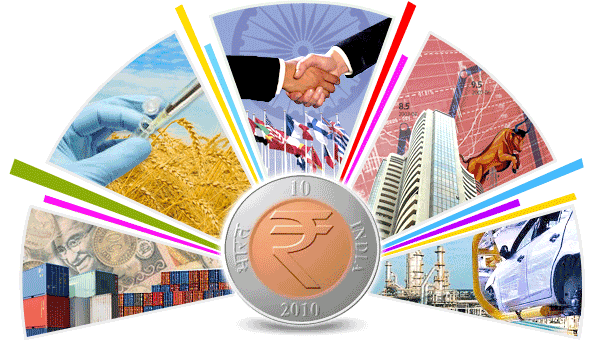
By Charan Singh
In a country with 79 crore people below the age of 34 years, such an economic trend requires urgent attention. The situation in the next few years on employment generation also looks grim because of automation and artificial intelligence.
The monetary policy of the Reserve Bank of India (RBI) announced on December 6, 2017, acknowledges that the growth of real gross value-added accelerated during June to September of 2017-18, after five consecutive quarters of deceleration. While industry registered higher growth, agriculture slackened and services decelerated mainly on account of slowdown in financial, insurance, real estate, professional services, public administration, defence and other services. Construction activity remained tepid and growth in private final consumption expenditure slowed to an eight quarter low during Q2. The IIP data released on December 12 for October 2017 reveals that manufacturing is expanding at lower pace than corresponding period of previous year. Similar is the trend in all categories of use-based production with performance in consumer durables at -1.9% during April-October 2017 and -6.9% in October 2017. The annual rate of inflation measured through wholesale price index has increased to 3.93% and consumer price index at 4.88% for November 2017 compared to 3.59% and 3.58%, respectively, in October 2017. Further, high frequency data, according to RBI, suggests a mixed picture of industrial activity in Q3.
In a country with 79 crore people below the age of 34 years, such an economic trend requires urgent attention. The situation in the next few years on employment generation also looks grim because of automation and artificial intelligence. Therefore, an out-of-the-box strategy, in addition to traditionally emphasised encouragement of MSMEs, is required for India to create employment, otherwise demographic dividend can become a disaster reflected, probably, in increased drug abuse. The focus of the government should now be on reviving growth and placing it on a sustainable path of more than 9%. In this context, the finance minister had recently announced a strong push to the economy by building nearly 83,000 km of roads over the next few years. Nearly, 9,000 km of economic corridors were identified and 6,000 km of feeder roads penetrating through rural areas.
Rural focus
Road building projects can be linked to development of rural areas, with potential for employment for youth. The rural economy accounting for nearly two-third of population is vital for development of the nation, as it not only supplies food for consumption, but also provides a domestic market for industrial output which can sustain demand in the absence of exports. The broad employment pattern in the country reveals that nearly 47% of population is absorbed in agriculture and allied activities, 12% in manufacturing, 13% in construction, and 18% in trade, hotels and restaurants. The worker participation rate (WPR) amongst the youth (18-29 years) is lower at 39.2 as against 57.3 for older age group of 30 years and above. In rural areas, WPR for youth is 42.3 as compared with 60.1 for the older group. Unemployment rate amongst educated youth is also increasing.
To increase employment, especially in the rural sector, the government needs to follow a multipronged strategy that takes into account regional and local considerations, depending on cropping pattern and agriculture cycle as well as exploring new opportunities. The improvement in road connectivity should lead to better role of village, cottage and micro enterprises (VCME). Illustratively, a well-developed road network can play a pivotal role in exports of agriculture, horticulture and floriculture produce, provided there are state-of-the-art processing units, and suitable infrastructure like cold storages and adequate warehouses. To encourage VCME, the government could consider tax incentives, facilitate financing, provide interest subsidy and address issues related to technology absorption. It is time to consider instituting a Small Industry University, on lines of the Agricultural University, in every state to provide research support and assist VCME in developing and marketing their local produce.
Tourism
To improve job opportunities, given better road connectivity, one potent alternative is tourism. Interestingly, tourism contributes hugely to the economy of countries like Australia, Germany, Italy, Malaysia, Mexico, New Zealand, the Philippines, Thailand and Turkey. India, endowed with diverse and rich natural resources, can explore opportunities in different segments of tourism sector. First could be rural tourism, to generate local employment. This initiative would have to consider specific location of rural areas, climate zone and connectivity with city, airport or seaport. In view of extensive road network being envisaged, and linking of rivers and canals, the government can consider developing water sports tourist venues and mountain tourism, including skiing resorts, wherever applicable.
There is also opportunity and scope for international collaboration on medical tourism, given that medical services are relatively expensive in advanced countries and constrain fiscal position due to increased longevity of life. Foreign collaboration with insurance companies, hospitals and global pharmaceutical companies, especially in the US, UK and Europe, would ensure high volume of medical tourists. Once road network is extensively developed, India, the land of sages, yogis and gurus, with a large number of historical and pilgrim venues, can pursue religious tourism, emphasising intra-faith unity.
Interestingly, yoga tourism, which has gone global, mainly due to the International Yoga Day, could also be explored. In view of the grim economic situation, the government needs to strategise growth path, beyond traditional sectors, to generate employment. The extensive road network along with linking of rivers will improve movement of goods and services, between urban and rural areas, help monetise rural economy, and bring resources and rural produce into the formal financial sector. This strategy of combining road and water network with rural development can place India on a sustainable growth path through emphasis on tourism and enhancing employment opportunities for young India.
Charan Singh is the Professor, Economics and Social Sciences, IIM Bangalore
Source: Financial Express

Leave a Reply